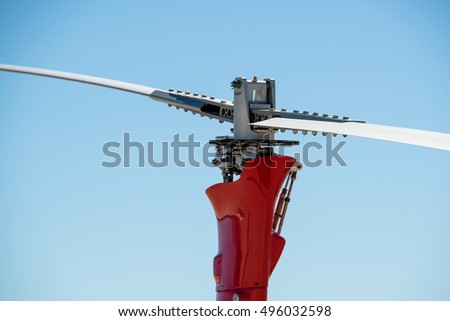
- Free Gyrocopter Plans Storage Containers
- Free Gyrocopter Plans Storage Sheds
- Free Gyrocopter Plans Storage Buildings
Free Gyrocopter Plans Storage Containers
Nov 11, 2017 - AutoGyros - MIA AutoGyro with Teeter and Delta 3 Head - This is my latest design model of the popular Bensen gyrocopter, 007's Little Nelly, but equipped with teeter and delta 3 rotor head and redesigned for a more personal look. Waiting some more finishing work and a good day for flying. With Apple One, you can choose a subscription plan that includes 50GB, 200GB, or 2TB of iCloud storage. Learn more about Apple One. If you purchased a 1TB monthly plan before June 5, 2017, your account was upgraded automatically to a 2TB monthly plan. What is Outerzone? Outerzone is a database containing model RC aircraft plans from vintage or defunct plans. Since 2011, Outerzone is an RC-community-backed site that started mainly as a repository for free flight, control line, radio control, and Round-the-pole airplane plans for balsa models to keep those plans from being lost in time and for future pilots to enjoy.
THE ORIGIN OF THE MODERN GYROPLANE: | ||
In the 1950s Bensen Aircraft Corporation exploded upon the sport aviation scene with their ground-breaking 'Gyrocopters' and 'Gyrogliders.' When the brilliant engineer behind this success, Dr. Igor Bensen, introduced the B-7 Gyroglider (1955), its unprecedented simplicity of design and ease of flight captured the public's imagination. Although the B-7 had no engine and was towed into the air very much like a kite, shortly thereafter the engine-powered B-7M Gyrocopter was introduced and a new age of powered homebuilt aircraft dawned. Dr. Bensen's revolutionary designs have been copied and modified, but, in the opinion of many, never surpassed. | ||
| ||
| The gyroplane (or 'gyrocopter' or simply 'gyro') is essentially a helicopter-airplane hybrid, offering many of the benefits of both and several of its own. Many consider it among the safest aircraft you can fly. Unlike a helicopter, the gyro's rotor blades are unpowered, necessitating a short roll for take-off—unless the craft is fitted with a pre-rotator, which can greatly reduce or even eliminate the need for a runway. A major safety feature of the gyro is that if the engine fails, the craft can be easily glided to a safe landing. Also, the gyro is less affected by high wind than typical fixed-wing aircraft and is not subject to stall. | |
SPECIFICATIONS OF THE B-8M GYROCOPTER Height.......................................................... 6½ ft Length .......................................................... 11 ft Empty Weight......................................... 250 lbs Gross Weight ........................................ 550 lbs Payload Weight ..................................... 300 lbs Rotor Diameter ........................................ 20½ ft Disc Loading (lbs/sq ft) ................................ 1.6 Engine (original) .................. McCulloch 4318 Horsepower Range................................ 65 to 90 Maximum Speed ..................................... 95 mph Cruise Speed ........................................... 65 mph Rate Of Climb .................................... 1,100 fpm Maximum Altitude .............................. 15,000 ft | ||
The B-8M Gyrocopter (left and above) fits in the Experimental Aircraft category. | ||
The above 2 aircraft are the unpowered Bensen B-8 Gyrogliders, which were towed into the air by an automobile or, if fitted with floats, by a boat. Once airborne, the cable was released and, with proper skill and perhaps some help from the wind, the craft could continue its flight for many minutes. Once control of the glider was mastered, the craft was convertible to the engine-powered gyrocopter. | ||
THE B-7(M) Gyro-Glider and Gyro-CopterThe B-7 Gyro-Glider (right) and the B-7M Gyro-Copter (below) are the innovative Bensen designs that, in 1955, ignited the gyro craze. | |
| Drawing of the B-7 converted to engine power—now designated the B-7M. | SPECIFICATIONS OF THE B-7(M) 'GLIDER & 'COPTER Height......................................................... 6½ ft Length .......................................................... 8 ft Empty Weight....................................... 185 lbs Gross Weight ........................................ 450 lbs Payload Weight .................................... 265 lbs Rotor Diameter ...................................... 20½ ft Disc Loading (lbs/sq ft) ............................... 1.4 Engine (original B-7M) ....................... Nelson Horsepower Range (B-7M)................ 42 to 65 Maximum Speed ................................... 85 mph Cruise Speed ......................................... 55 mph Rate Of Climb ................................... 1,000 fpm Maximum Altitude ............................. 12,500 ft |

Free Gyrocopter Plans Storage Sheds
The B-6 Gyro-GliderThe B-6 Gyro-Glider (left), created in 1953, was one of the first Bensen design to come to the public's attention. The rotorblades mounted atop the B-6 are, unlike a helicopter's, free-spinning in response to the movement of air over their suface—very much like the propellor of a toy pinwheel. With a relatively modest forward tow speed (by car or boat) of about 23 mph, the rotorblades reached a speed of about 250 mph, providing lift for the Glider to take-off. The rotorblades already have a fixed, built-in pitch, so all the pilot needs to do is steer the Glider with the handlebars almost as one would steer a bike. Once airborne, the tow-line is released for a free and controlled flight—a flight that can last 15 minutes or longer. Indeed, even with a relatively mild wind of perhaps 23 mph, the B-6 can take off and fly very much like a kite! | ||
| SPECIFICATIONS OF THE B-6 GYRO-GLIDER Height......................................................... 5½ ft Length .......................................................... 7 ft Width ............................................................. 4 ft Empty Weight........................................ 105 lbs Gross Weight ....................................... 355 lbs Payload Weight .................................... 250 lbs Rotor Diameter ......................................... 20 ft Cruise Speed ...............................25 to 60 mph Landing Speed ........................................ 7 mph Rate Of Climb .................................. 1,000 fpm Maximum Altitude ............................ 12,500 ft | The B-6upon completion | The cleverly named Midjet (combining 'midget' and 'jet') was basically a B-6 with ramjet engines mounted on the rotor tips. This tiny helicopter was said to be capable of lifiting several times its own weight. |